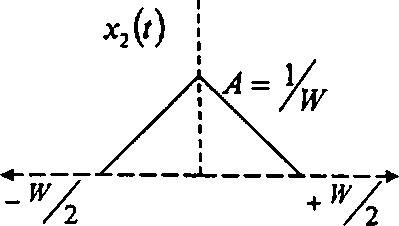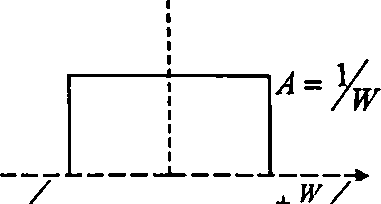Thapar University 2006 B.Tech Electronics and Communications Engineering DIGITAL SIGNAL PROCESSING FOR COMMUNICATIONS - Question Paper
Thapar Institute of Engineering & Technology
B.Tech ECE (3rdYear)
Final Term exam
EC025 (DIGITAL SIGNAL PROCESSING FOR COMMUNICATIONS)
Course Code: EC-025 / Course A'ante: Digital Signal Processing for Conununication / Instructor: Dr. Arnit Kumar Kohli
Marks: 12X6 = 72
Time: 3.0 Hrs.
(8)
Thapar Institute of Engineering and Technology Electronics and Communication Engineering Department B.E. Illrd Year, Final Examination
Attempt any six questions
Question 1.1: Derive Hilbert Transform Pair.
Question 1.2: What is application of Hilbert Transformer in the field of radar and speech signal processing?
Question 2.1: Consider an HR filter transfer function
h[z]=Li24
(3)
lJ 1 + 3 z"1
Obtain its Two-Band Decomposition using polyphase decomposition technique.
Question 2.2: Design a Decimator for the reduction of sampling rate of a signal from YlKHz to 400Hz (as shown in Fig. 1) for the following specifications. (2)
Passband edge frequency Fp =180Hz Passband ripple Sp = 0.002
Stopband edge frequency Fs - 200Hz Stopband ripple St = 0.001
 |
|
Fig. 1: Single-stage Dccimator. |
Design Three-Stage Decimator with
(7)
M = Mx x M2 x M3 = 5 x 3 x 2 How Multistage Multirate Signal Processing helps in reducing the computational complexity?
Question 3.0: Consider a Linear Predictor of order two, described by =V-1 +/VV
where, the predictor coefficients and are selected to minimize the mean-square value of predictor error:
3.1) Show that the optimum values of the predictor coefficients are given by K = and hc2 =
(6)
1 -p;
...... . Rx{2)
3.2) Show that the minimum mean-square error equals
where, the variance <j\ = Rx (O).
Question 4.0: Using derivative method,
4.1) Derive the Continuous-Time Fourier Transform of following
 |
|
(b) Triangular Function |
|
_W |  |
|
'2 n /2 (a) Square Function | |
4.2) Derive the Discrete-Time Fourier Transform of y(n)= *(w)* w(). where, () is the Step Function in discrete-domain.
(4)
(2)
4.3) What is relation between correlation and convolution?
Question 5.1: Determine the signal x(n), whose z-transform is given by (3)
X[z] = log(l + az'1) \z\ > \a\
Question 5.2: Using z-transform, determine the Auto-Correlation Sequence of the signal
x(w) = aflu(), -l<a<+l (4)
Question 5.3: Describe the Goertzel Algorithm used to calculate DFT by the linear filtering approach. (5)
Question 6.1: Prove that the FIR filter has a linear phase if its unit sample response satisfies the condition h(n) = h(M -n-l) for n = 0, 1, 2, ... , M -1. (4)
Question 6.2: Describe the Chirp-z Transform Algorithm used to calculate DFT. (4)
Question 6.3: Design a highpass filter to meet the following specifications. (4)
Cutoff frequency = 250Hz, Sampling frequency Fs = 1 KHz, and Filter length = 7.
Question 7.1: Design a lowpass filter for the following specifications.
di63)-and //,(*>)={(), j<\a>\<x (5)
Use rectangular window WR(n) = 1, 0 < n < 4
Question 7.2: Use Bilinear transformation to design a highpass digital filter using Butterworth approximation to meet the following specifications.
Stopband ripple 515dB
Passband edge = 150Hz (7)
Passband attenuation > 1 dB Stopband edge = 100Hz Sampling frequency = 1 KHz
|
Attachment: |
| Earning: Approval pending. |
